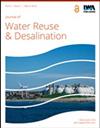高密度罗非鱼养殖中三个生产阶段废水中的氮磷通量
IF 2.3
Q2 Environmental Science
引用次数: 5
摘要
在本研究中,评估了生产阶段对高强度罗非鱼(Oreochromis niloticus)养殖废水中氮和磷排泄的影响。养殖鱼类时考虑了三个发育阶段(幼鱼1.79克,幼鱼36.13克,成年鱼72.96克)。测定了亚硝酸盐、硝酸盐、铵和磷的浓度,以了解在高放养密度下鱼类每个生产阶段排出的营养物质量。在实验过程中记录了生物特征数据,目的是确定鱼类的生长行为,以及测量有氧代谢。结果表明,高密度养殖不影响鱼类的生存、生长和健康;此外,蛋白质和脂质的联合分解代谢被认为是能量的底物,O:N比值在20到60之间。此外,在鱼种高信号养殖的废水中,每克鱼的氮化合物和磷排泄浓度高于幼鱼和成年鱼。这些结果表明,在鱼类生长的早期阶段就可以使用这些废水,旨在增强可持续系统,最大限度地利用资源,如水产养殖系统。本文章由计算机程序翻译,如有差异,请以英文原文为准。
Nitrogen and phosphorus flux in wastewater from three productive stages in a hyperintensive tilapia culture
In this research, effect of productive stages in nitrogen and phosphorus excretion in wastewater from hyperintensive tilapia (Oreochromis niloticus) culture was evaluated. Fish were cultivated considering three development stages (fingerling of 1.79 g, juvenile of 36.13 g, and adult of 72.96 g). Nitrite, nitrate, ammonium, and phosphorus concentration were determined in order to know the amount of nutrients excreted per productive stage of the fish at a high stocking density. Biometric data were recorded during the experiment with the purpose of determining the growth behavior of fish, as well as the measurement of the aerobic metabolism. Results showed that survival, growth, and health of fish are not affected by hyperdensity of culture; as well, combined catabolism of proteins and lipids was presented as substrates for energy with value for O:N ratio ranging between 20 and 60. In addition, higher concentration in excretion of nitrogen compounds and phosphorus per gram of fish was recorded in wastewater from a hyperintensive culture in fingerlings than in juveniles and adults. These results suggest the use of this wastewater in the early stages of fish growth, aiming to enhance sustainable systems with maximum use of the resources, such as aquaponics systems.
求助全文
通过发布文献求助,成功后即可免费获取论文全文。
去求助
来源期刊

Journal of Water Reuse and Desalination
ENGINEERING, ENVIRONMENTAL-WATER RESOURCES
CiteScore
4.30
自引率
0.00%
发文量
23
审稿时长
16 weeks
期刊介绍:
Journal of Water Reuse and Desalination publishes refereed review articles, theoretical and experimental research papers, new findings and issues of unplanned and planned reuse. The journal welcomes contributions from developing and developed countries.
 求助内容:
求助内容: 应助结果提醒方式:
应助结果提醒方式:


